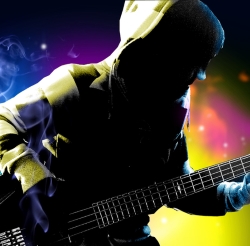
Editor’s Note: Here’s an interesting thread from the PSW Live Audio Board (LAB) forums. It’s lightly edited for grammar and formatting. Enjoy.
Posted by John
I’ll be working with some bands where the rider notes a mic and DI for bass.
Maybe I’ve worked with quiet bass players, if there is such an animal. But the few times I’ve tried it, I’ve soloed the mic in my cans and found that the drum bleed was as loud or louder than the bass. So I haven’t bothered in years.
I understand how it can add definition, but won’t a little well placed EQ work? And what about phase interactions between the mic and DI? And add the stage bleed to that.
Is it really a useful technique or just “something that works in the studio, so let’s use it live” thing.
Reply by Roland
You can sometimes get a bit of something using a mic, but the stage acoustics need to be ok. The bass amp really needs to be adding something or it’s a bit of a waste. You have to think about latency, a Little Labs device in between box can do this, or you can add delay to your digital console if it’s got it. I generally think it works on “character sound” where the amp is an integral sound. Other than that, the DI’s good.
Reply by Mike
I was introduced to this as a guest mixer at a mini-festival. The depth that the mic added was very noticeable. I think he used an EV mic, but I could be wrong. We had the DI up and brought in the mic to taste. I wish I had time to do this more often, but mostly I’m scrambling just to get the DI plugged in. If it wasn’t already setup I probably never would have tried it.
Reply by Mark
I thought that mic’ing a bass cabinet (in addition to a DI) was mostly about making the bass player feel like you were getting his “real” sound. I.e., the placebo effect.
Reply by Rob
I did a walk in bar gig once where there were maybe 14 working snake channels. The drummer shows up with everything in the catalog, the big frame with 6 toms mounted and every cymbal you could imagine.
I did a kick, snare, OH and was pretty much out of channels. He gets all in my face about micing this & that. So I have a few more stands and a couple of ratty mics left. I put up some mics, brought the cables over to the edge of the stage where the patch was and sorta dropped them off the edge.
Reply by Lee
I generally try not to have my time so tight, that the 45 seconds it takes to put a mic on bass cab will make or break a show.
Having a mic’d cab input not only gives you an additional sound to work with, should you choose to incorporate it, it also gives you a reference for the sound the player is trying to achieve. It could also be an “effects” send that represents the players effects that is mixable with the dry signal. Especially in a situation where you don’t know the band.
I really think that just throwing the DI d’jour on floor and saying plug into this, is about the same as thinking that the spikey/clicky kick drum sound a lot metal bands covet, should also be used on jazz and any other style of music. It’s just lazy.
Reply by Roland
Whilst I agree with you in a lot of ways Lee, in this day and age a lot of players are playing with cabs that are not much more than amplified DI’s. Of course if a player is doing more than that, I think a mic is a given. That being said I would always mic a bass on a high level gig even if it didn’t end up being used. On small stages and with less than stellar players all sorts of other things come into play, not least of all the acoustics (many club stages are 7-8ft) and can play havoc with bass resonance.
A friend of mine and I were discussing this exact issue and he was talking about working with Doug Wimbish of Living Colour who has one of the most complex bass set-ups you are ever likely to see. Multiple DI’s and mic’s to achieve his sound. As of most things in this industry, it always depends.
